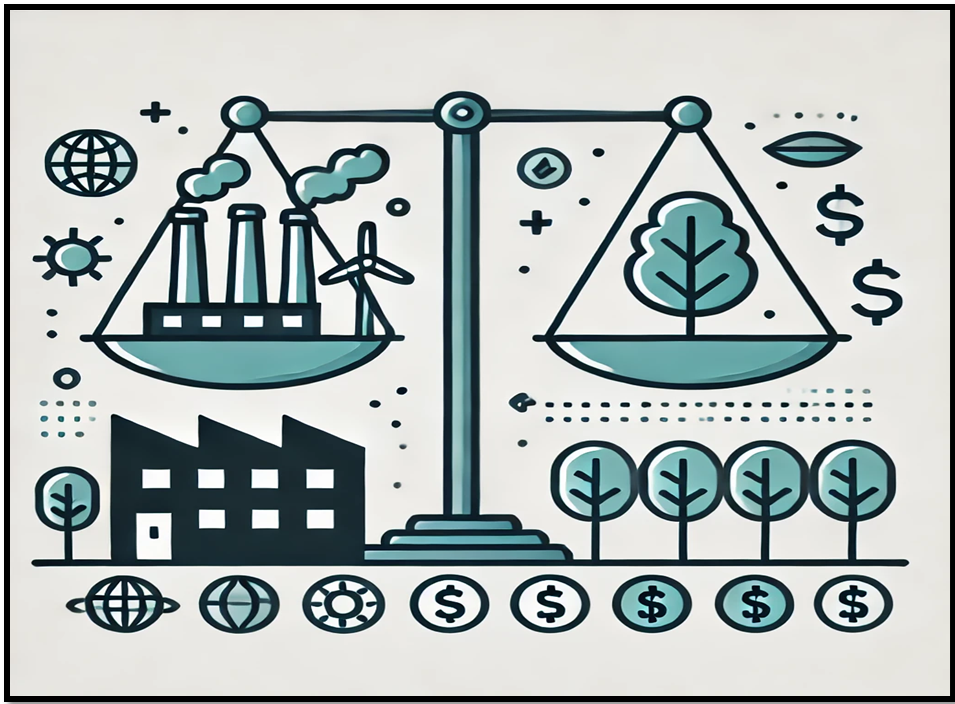WHO’S THE GREENEST OF ALL?
Source: static.toiimg.com
Relevance:
GS 3 –
Environmental Conservation, Climate Change, Sustainable Development.
Focus
- The climate debate is gaining momentum, with developing nations like India playing a crucial role.
- This analysis delves into climate change issues, the responsibilities of developing countries, and the strategies outlined in the ‘economic survey’ to tackle these challenges.
Current Scenario
- Global Climate Commitments: Countries globally are striving to address climate change through Nationally Determined Contributions (NDCs) under the Paris Agreement.
- Developing Countries’ Role: Although developing countries have historically contributed less to emissions, they are increasingly expected to adopt sustainable practices and lower their carbon footprint.
- Economic Growth vs. Sustainability: Striking a balance between economic growth and environmental sustainability is a major challenge for developing nations like India.
Challenges Faced
- Resource Constraints: Developing countries frequently encounter financial and technological limitations in implementing extensive climate initiatives.
- Equity and Responsibility: The historical emissions principle asserts that developed nations, having contributed more to climate change, should assume greater responsibility for mitigation efforts.
- Economic Pressures: The push for rapid economic development and poverty reduction pressures developing countries to prioritize short-term economic gains over long-term sustainability.
- Dependence on Fossil Fuels: Despite its climate commitments, India remains significantly dependent on coal, which meets 75% of its energy needs. This reliance is expected to continue at least until 2040.
India’s Climate Strategy
- National Action Plan on Climate Change (NAPCC): India’s NAPCC includes eight missions, such as solar energy, improved energy efficiency, and sustainable agriculture, to combat climate change.
- Renewable Energy Goals: India targets 450 GW of renewable energy capacity by 2030, concentrating on solar and wind power.
- Afforestation and Green Cover: Efforts to boost forest and tree cover to serve as carbon sinks and support biodiversity.
- Energy Transition: A gradual shift from fossil fuels to renewable energy sources to decrease greenhouse gas emissions.
Various Recent Initiatives
|
Economic Survey Insights
- Sustainable Consumption: Stresses the need for sustainable consumption practices, including waste reduction, recycling, and the promotion of eco-friendly products.
- Green Finance: Advocates for increased investment in green technologies and infrastructure through collaboration between the public and private sectors.
- Climate-Resilient Infrastructure: Emphasizes the development of infrastructure that can endure climate impacts, such as extreme weather events and rising sea levels.
- Circular Economy: Supports a circular economy approach where resources are reused, recycled, and regenerated to minimize waste and environmental impact.
Global Comparisons
- China: As the top emitter of greenhouse gases, China has pledged to peak carbon emissions before 2030 and achieve carbon neutrality by 2060.
- United States: The US has rejoined the Paris Agreement and aims to cut emissions by 50-52% below 2005 levels by 2030.
- European Union: The EU’s Green Deal seeks to make Europe the first climate-neutral continent by 2050, with extensive policies across all sectors.
Technological Adoption
- Renewable Energy: Investing in solar, wind, and hydropower to cut reliance on fossil fuels and reduce carbon emissions.
- Energy Efficiency: Applying energy-efficient practices and technologies in industries, buildings, and transportation to decrease energy consumption.
- Sustainable Agriculture: Encouraging sustainable farming methods that boost productivity while minimizing environmental impact, including precision farming and organic methods.
- Smart Cities: Creating smart cities with cohesive urban planning that integrates green technologies, effective resource management, and sustainable infrastructure.
Community and Grassroots Initiatives
- Local Adaptation Plans: Empowering communities to create and execute adaptation strategies tailored to their specific climate vulnerabilities.
- Public Awareness Campaigns: Raising awareness about climate action and promoting individual and community involvement in sustainability efforts.
- Traditional Knowledge: Utilizing traditional knowledge and practices sustainably employed by indigenous communities over generations.
Policy Recommendations
- Integrated Policy Approach: Formulating comprehensive policies addressing climate change across various sectors such as energy, transport, agriculture, and industry.
- International Cooperation: Enhancing international collaboration and support for developing nations through technology transfer, financial aid, and capacity building.
- Innovative Financing: Investigating innovative financing options, like green bonds and climate funds, to mobilize resources for climate initiatives.
- Regulatory Frameworks: Establishing strong regulatory frameworks to enforce environmental standards and encourage sustainable practices across sectors.
Environmental Dimensions
- Biodiversity Conservation: Safeguarding and restoring biodiversity to strengthen ecosystem resilience and aid climate adaptation.
- Water Management: Adopting sustainable water management practices to ensure water security amid changing precipitation patterns and rising demand.
- Air Quality: Tackling air pollution through stricter emissions standards and promoting clean energy alternatives to enhance public health.
Social Dimensions
- Climate Justice: Ensuring climate policies are inclusive and fair, protecting vulnerable populations and advancing social justice.
- Health Impacts: Addressing climate-related health issues, such as heat stress, vector-borne diseases, and respiratory conditions, through adaptive healthcare systems.
- Livelihoods: Supporting livelihoods vulnerable to climate impacts, such as agriculture and fisheries, through targeted interventions and social protection programs.
Economic Dimensions
- Green Jobs: Generating green jobs through the expansion of renewable energy, sustainable agriculture, and eco-friendly industries.
- Sustainable Tourism: Encouraging sustainable tourism practices that preserve natural resources and offer economic benefits to local communities.
- Circular Economy: Shifting to a circular economy model to minimize waste, optimize resource use, and create economic value from recycled materials.
Innovation and Research
- Research and Development: Investing in R&D to create new fabrics, enhance manufacturing processes, and develop sustainable practices.
- Industry-Academia Collaboration: Promoting cooperation between industry and academia to drive innovation and address industry challenges through research and training.
- Tech Hubs: Establishing tech hubs and innovation centers focused on the garment and textile industry to foster creativity and technological progress.
Case Studies
|
Conclusion:
Developing nations like India face the challenge of balancing economic growth with environmental sustainability. By adopting comprehensive policies, investing in technology, and promoting sustainable practices, India can contribute to global climate objectives while addressing its developmental needs.
Mains Question :
Discuss the challenges and opportunities for developing countries like India in addressing climate change. How can they balance economic growth with environmental sustainability? (250 words)
Source:The Indian Express




